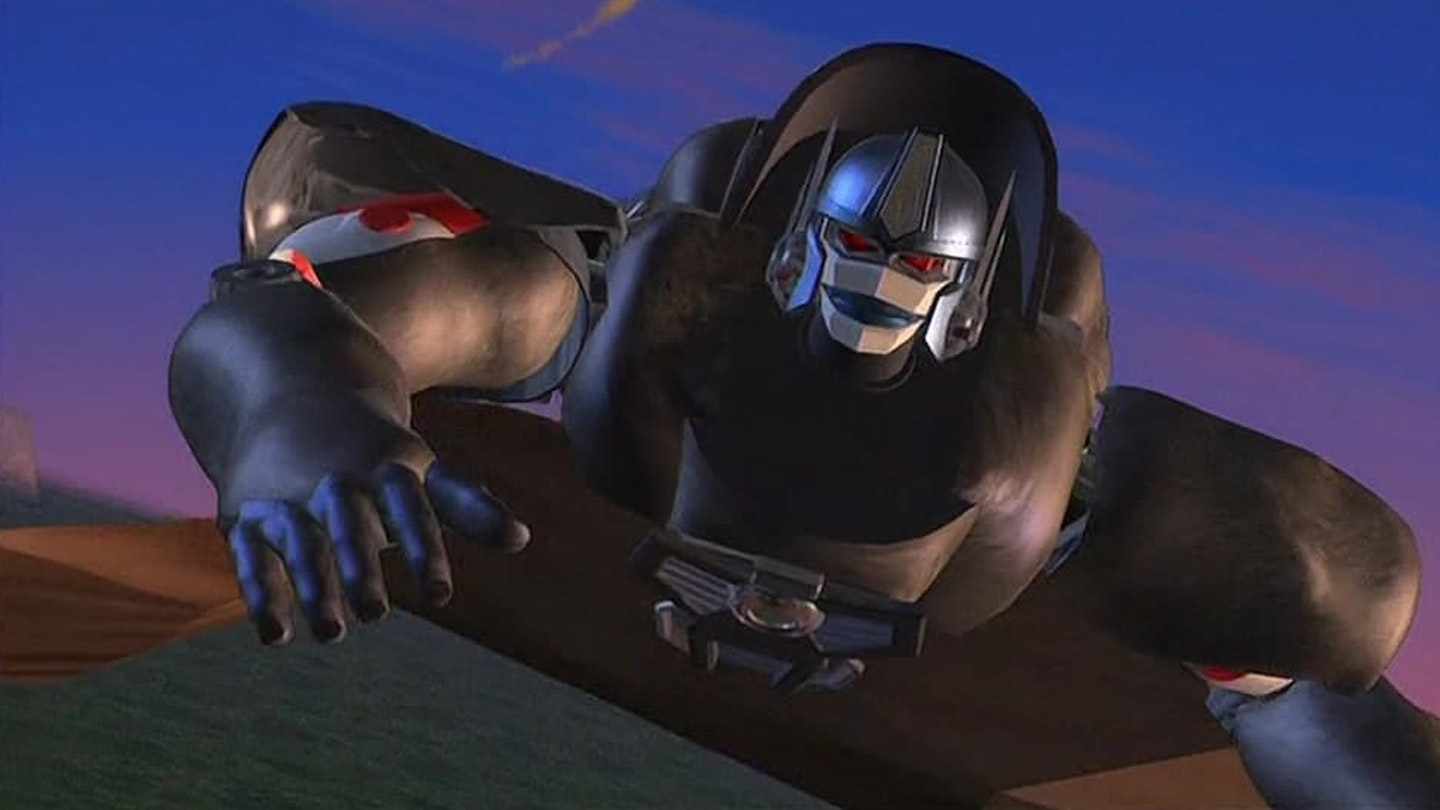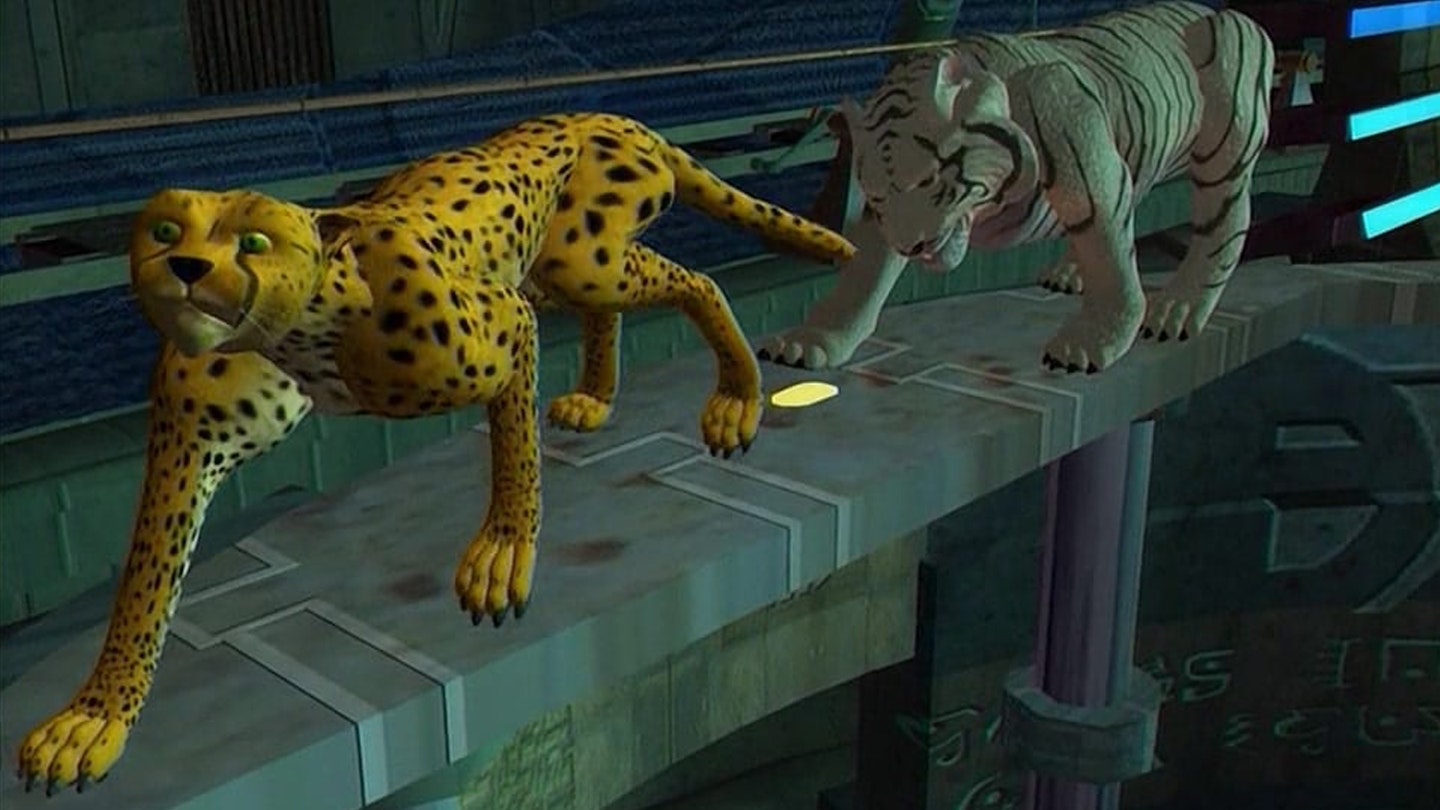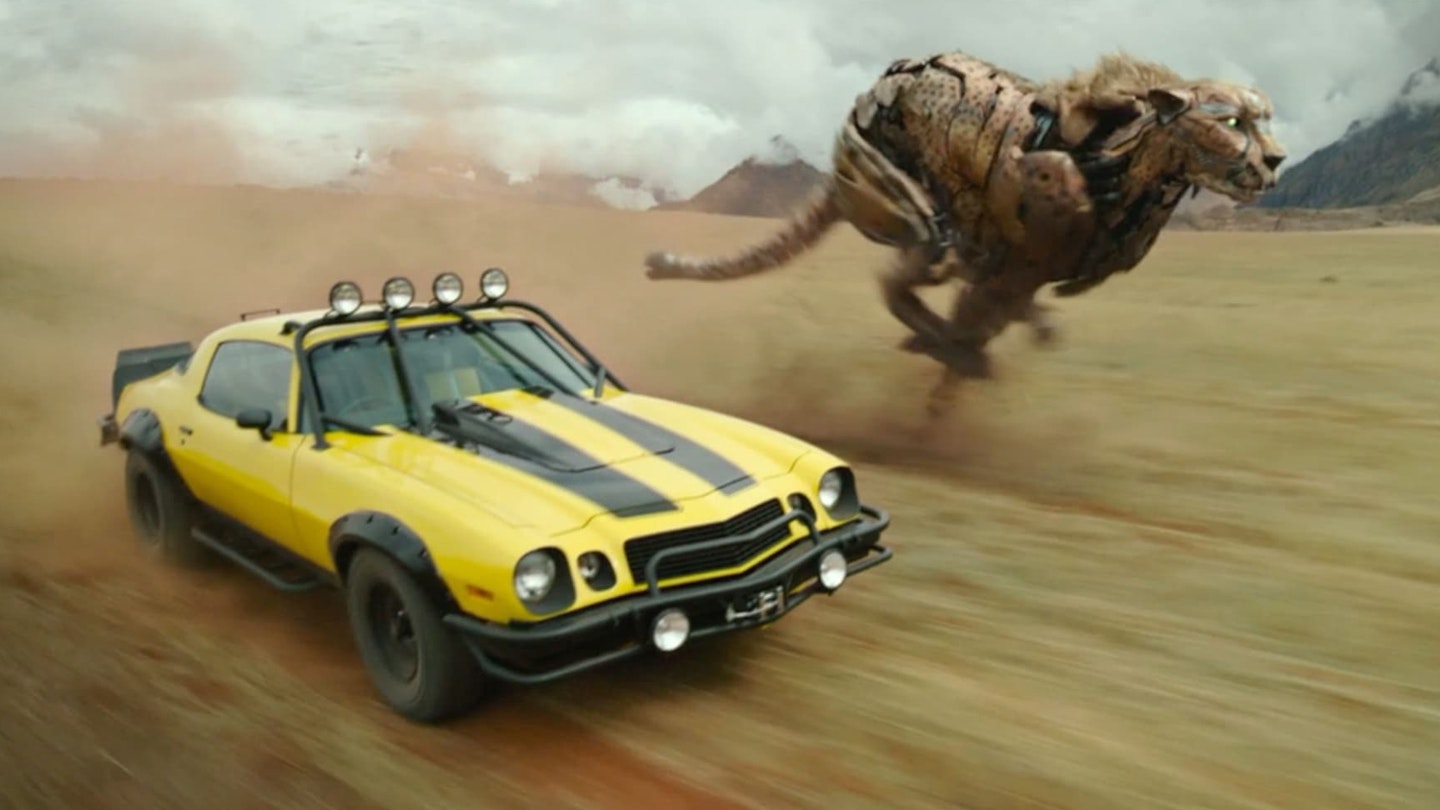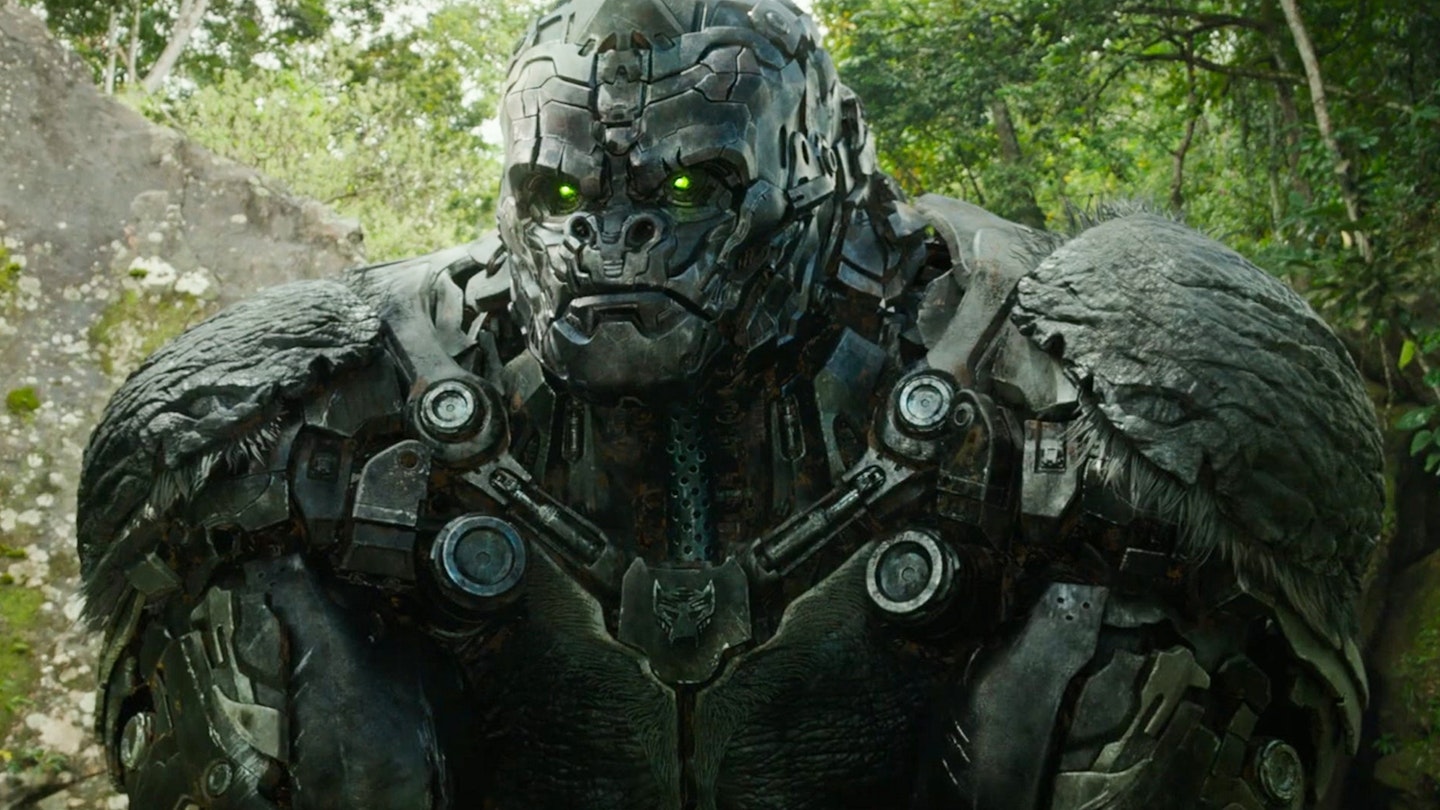With a new trailer on the way (hot on the heels of a surprise appearance from Optimus Prime at Coachella – no, really) Transformers: Rise Of The Beasts is gearing up to roll out. Following the acclaimed smaller-scale adventures of Bumblebee, the new movie looks in many ways like it’s heading back to basics: armies of big ol’ robots bashing seven shades of premium unleaded out of each other in a high-stakes globe-spanning adventure. There’s a new twist, though, and its right there in the name. Rise Of The Beasts highlights a new faction of ‘formers who transform into wild animals instead of planes and cars. It’s a premise taken from Beast Wars, the 1990s follow-up to the 1980s Transformers toyline and TV show.
For a show designed, like all Transformers fiction, to advertise Hasbro’s lucrative toyline, the 1996 Beast Wars animated series is deliriously weird and complex. Beneath the shonky mid-90s CGI, there’s a heady blend of The Terminator, Planet Of The Apes and 2001: A Space Odyssey there waiting to be brought to the big screen by anyone brave enough to try (in this case, Creed II filmmaker Steven Caple Jr). Let this article be your (Optimus) primer on everything that Rise Of The Beasts maybe will, definitely won’t, and probably should take from the original cartoon.
What is Beast Wars, and what does it mean for Rise Of The Beasts?

Launched in 1996 as a set of toys and a high-tech (for its day) computer-animated TV series, Beast Wars was the first major reboot of the original Transformers franchise. Instead of the Autobots and Decepticons – warring armies of alien robots disguised as human vehicles – Beast Wars brought us the Maximals and Predacons, warring armies of alien robots disguised as, well, beasts. Tarantulas turns into a tarantula, Rattrap turns into a rat, Waspinator turns into… well, you get the idea. The animated series took this idea and ran with it; given the job of selling the premise to a new generation of kids and old-school Transformers fans, the writers came up with a twisty sci-fi mythos which linked the new set of beasties with the world of the original Autobots.
It remains to be seen just how much of Beast Wars will make it into the new film; the Michael Bay movies were known to play extremely loose with Transformers continuity, so we’re not getting our hopes up for a faithful adaptation. All we know for certain is that Beasts will involve the Maximals, the fuzzy, four-legged counterparts of the heroic Autobots. The trailers have shown four Maximals, all major players in Beast Wars canon: Airazor (Michelle Yeoh), Rhinox (David Sobolov), Cheetor (Tongayi Chirisa) and their leader, the gorilla-like Optimus Primal (Ron Perlman). It might well be that the similarities end there, with the Maximals simply being airdropped in as back-up for the Autobots, but there’s a lot more there that could be adapted. More than meets the eye, in fact.
Why do the Maximals turn into animals?

Since the Transformers premise was always hooked around ‘robots in disguise’, you’d be forgiven for asking, “What kind of disguise is a big honking mechanical ape, anyway?” Of course, the real reason the Maximals go beast-mode is that in 1996 Hasbro wanted to revamp a flagging Transformers toyline, and somebody decided that trucks were out and monkeys were in. Those tasked with explaining this stuff to kids watching Saturday morning cartoons came up with a different explanation, though: the Maximals have crash-landed on a primitive planet teeming with raw energon, the substance used to power Transformers. If they don’t want their circuits to overload from the exposure, they need to take on organic forms based on the local fauna. Sounds complicated? We’ve barely gotten started.
It looks like Rise Of The Beasts might be skipping this explanation, if the footage of giant, metallic rhinos and cheetahs bashing into Porsches and lorries is anything to go by. This is a movie set on plain old Earth – which last time we checked had normal, healthy levels of energon – and the organic designs of the original creatures have been traded in for a much more robotic look. But if that crucial aspect of classic Beast Wars lore has been overlooked, there’s another element which seems like it might still be on the table.
How does time-travel play into the Beast Wars storyline?

At one point in the film’s first trailer, Optimus Primal warns the Autobots that, “Of all the threats, from both your past and future, you’ve never faced anything like this.” How would he know about threats from the future? It might be because, in the original series, that’s exactly where he comes from. The Maximals are actually the descendants of the Autobots, from a timeline where they won the war against the evil Decepticons, reclaimed their home planet Cybertron, and upgraded to smaller, more energy-efficient (and, conveniently, more beast-sized) bodies. Optimus Primal is a distant descendant of Optimus Prime, a plot point which it looks like Rise Of The Beasts might be sticking to if the Maximal leader really has come back in time to warn his ancestor of a dangerous new threat.
The original, animated Maximals also travelled to the past, although they went a bit further back. After spending many episodes scrapping with the Predacons – descended from the Decepticons – on what they think is a desolate alien planet, our heroes make a shocking discovery. To paraphrase Troy McClure: oh my god, they were wrong! It was Earth all along! As keen-eyed viewers might have twigged (what with all the gorillas and cheetahs running around), the planet they’ve crash-landed on is actually a prehistoric version of our own. It’s all part of the Predacons’ plans: having somehow gotten their hands on the golden record sent into space by NASA aboard the 1977 Voyager space probe (yes, really), they intend to use its information about humanity’s evolution to wipe us out before we even begin. No humans means nobody to help the Autobots beat the Decepticons on Earth, leading to a future where the Predacons rule. (We told you it was complicated!)
What’s unlikely to make the movie?

Again, it looks like Rise Of The Beasts might abandon this particular timey-wimey narrative in favour of something a bit more straightforward, and maybe that’s for the best. But it would mean we’re missing out on big-screen versions of some of the wildest and wackiest Transformers stories out there. Beast Wars’ writers took some extremely big swings. Some are sublime, like the stoic warrior Dinobot sacrificing himself in a one-man battle to save humanity’s ancestors from the Predacons, and inadvertently teaching them how to use tools in a Kubrickian flourish. Others are ridiculous, like the time Rhinox takes out the entire Predacon squadron with an ‘energon fart’ so destructive it’s visible from space. And some are just plain weird, like Airazor being abducted by aliens and fused with her lover Tigatron to form a gigantic super-Transformer called Tigerhawk (honestly, how do they come up with these names?).
However, while we wouldn’t put money on Academy Award winner Michelle Yeoh having to act out that sequence any time soon, there are some elements of Beast Wars’ basic set-up that the shepherds of the big-screen Transformers franchise could really stand to learn from.
Why Beast Wars could make for the best Transformers movie yet

Firstly, the main cast of the show have a very different dynamic to your typical Autobots and Decepticons. The heroes and villains of Beast Wars aren’t the leaders of their respective factions. They’re a much scrappier bunch: these Maximals are the crew of a research vessel unwittingly drafted into the struggle against evil, and the Predacons they fight are a rogue terrorist cell rebelling against Cybertron’s new Maximal overlords. Optimus Primal isn’t the fearless, revered military commander that Prime is; he’s smart, but he’s in over his head, and has to quickly grow into the role of leader in the face of constant insubordination. It feels like watching a small but crucial battle in a much bigger war, with a fresh group of characters that seem more human and less mythic than the iconic heroes and villains of the franchise’s first generation.
In general, Beast Wars is a show more focussed on character dynamics and development than almost any Transformers media before or since. A big part of that is its smaller cast. While the 1980s cartoon was all about jamming as many ‘bots onscreen as possible to keep kids buying new toys – and the Michael Bay films were often a blur of clanging metal and indistinguishable machines – Beast Wars kept its two teams to roughly five aside. This is in large part due to tech restrictions: working on one of the first ever fully-CGI TV shows, the animators had to save time and money by building fewer character models and limiting the number of characters onscreen at once. That meant more time spent with each individual Transformer, fleshing out their motivations and personalities. What’s more, when new characters were introduced, others needed to go – deaths and departures were frequent, and when they came they felt like they mattered.
This was rare in kids’ cartoons in general in the 1990s, and it’s something the Bay movies never tried to master. With the exception of Optimus and Bumblebee, none of the live-action Autobots or Decepticons ever felt distinct, which is one of the reasons the endless battles filling out those films’ runtime seem so dull and inconsequential. Regardless of whether Rise Of The Beasts stays true to Beast Wars’ mind-bending storylines and complicated lore, it should aim to adopt some of the character-focussed approach that made it a cult classic worth adapting in the first place.
Transformers: Rise Of The Beasts comes to UK cinemas from 9 June
